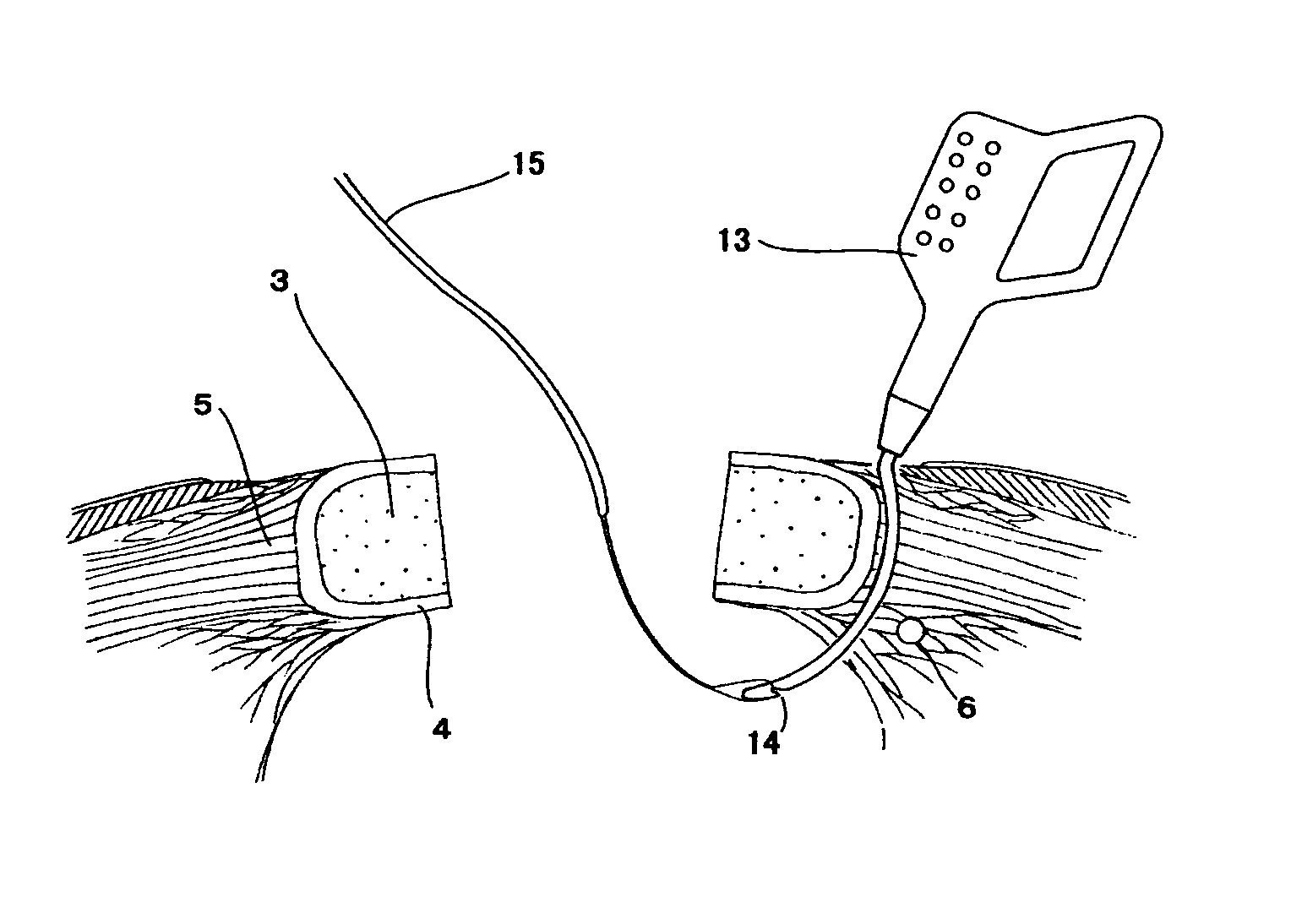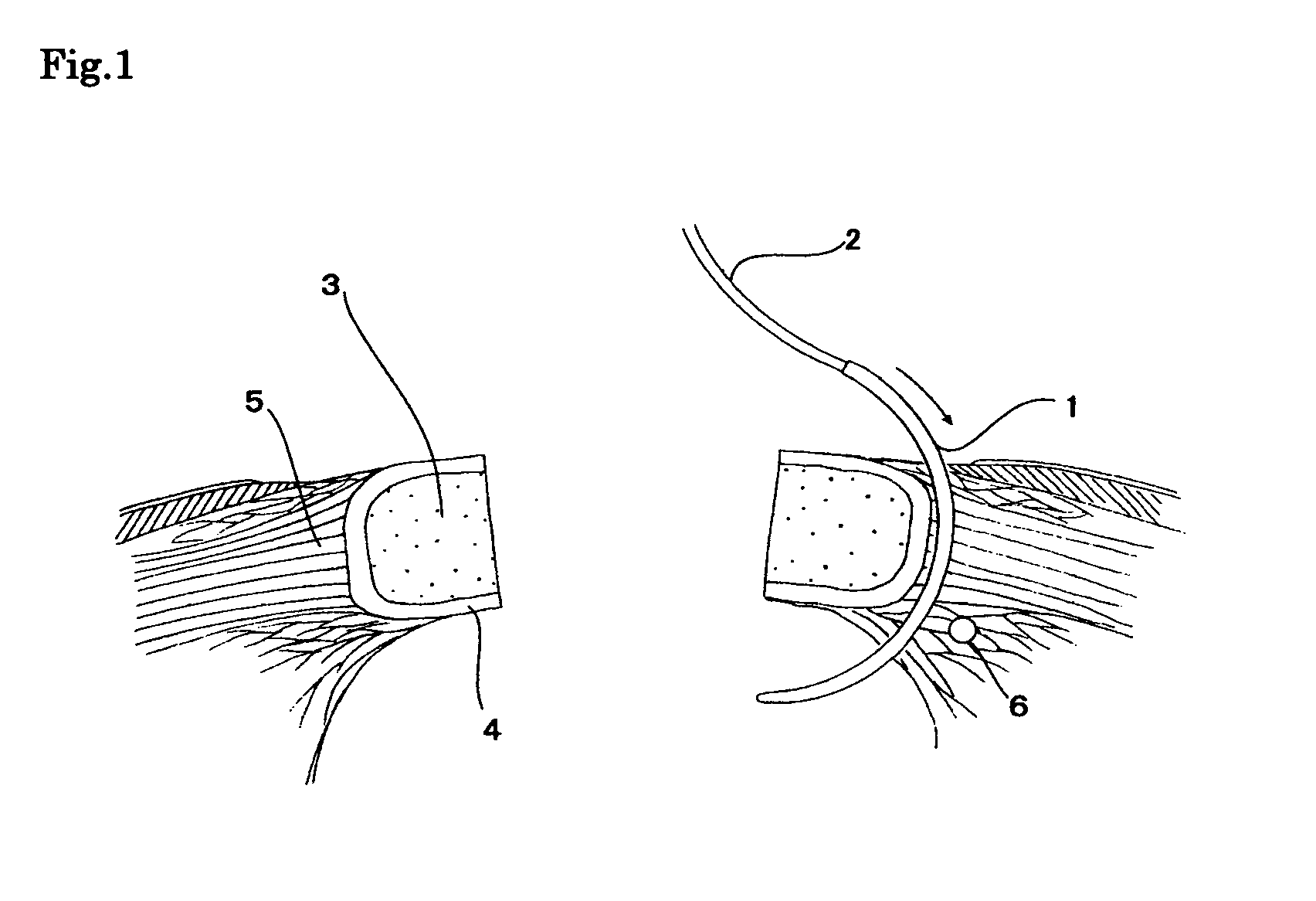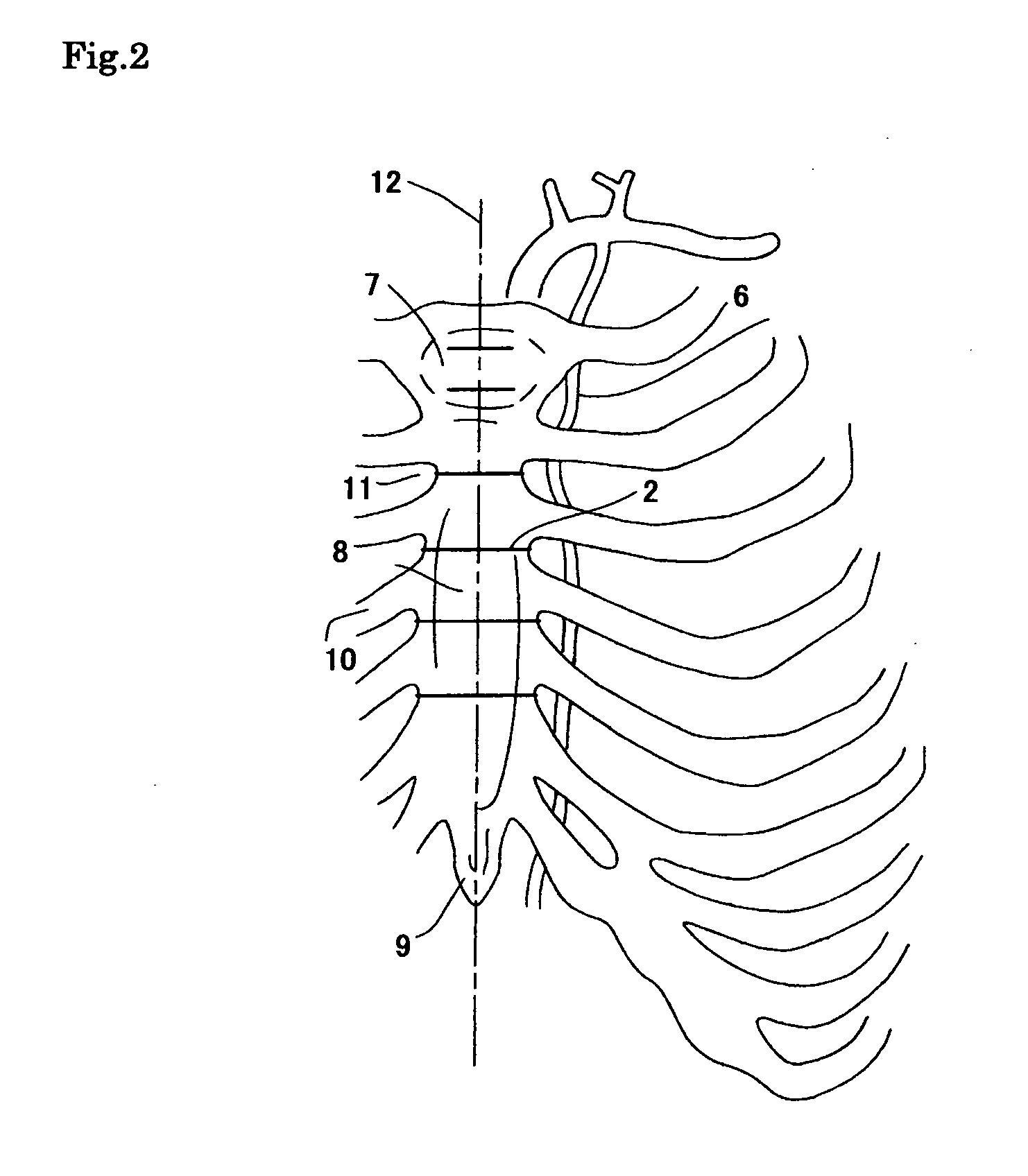Blunt intercostal suture needle
a suture needle and intercostal technology, applied in the field of suture needles, can solve the problems of suture site bleeding, difficulty in hemostasis, inadequate tightening of suture knots, etc., and achieve the effect of preventing wire cutting
- Summary
- Abstract
- Description
- Claims
- Application Information
AI Technical Summary
Benefits of technology
Problems solved by technology
Method used
Image
Examples
Embodiment Construction
[0021] As described above, the intercostal tissue can be adequately penetrated by using a blunt needle; therefore our idea is that it will be unnecessary to use a sharp needle. This has the benefits of reducing trauma and providing a safe method of closing the sternum, as the likelihood of damaging internal thoracic arteries and nearby tissue is minimal. Because it does not cause wire cutting, it prevents the occurrence of bleeding and fractures. This alleviates the need for hemostasis and has the effect of shortening the total operating time. The sharp needles have been included in the same pre-sterilized packs. Therefore from opening a single pack, it is now possible to have the desired combination of both the needles. The sharp needle is used for the closure of the manubrium which is located at the top end of the sternum, and the blunt intercostal needle is used for suturing of the bottom part. It is now possible to avoid unnecessary sterilization and disposal of the needles by t...
PUM
 Login to View More
Login to View More Abstract
Description
Claims
Application Information
 Login to View More
Login to View More - R&D
- Intellectual Property
- Life Sciences
- Materials
- Tech Scout
- Unparalleled Data Quality
- Higher Quality Content
- 60% Fewer Hallucinations
Browse by: Latest US Patents, China's latest patents, Technical Efficacy Thesaurus, Application Domain, Technology Topic, Popular Technical Reports.
© 2025 PatSnap. All rights reserved.Legal|Privacy policy|Modern Slavery Act Transparency Statement|Sitemap|About US| Contact US: help@patsnap.com



